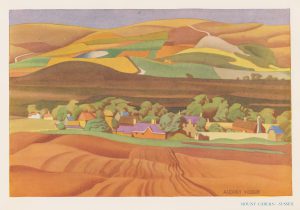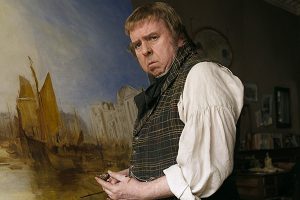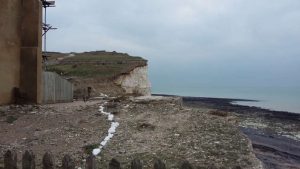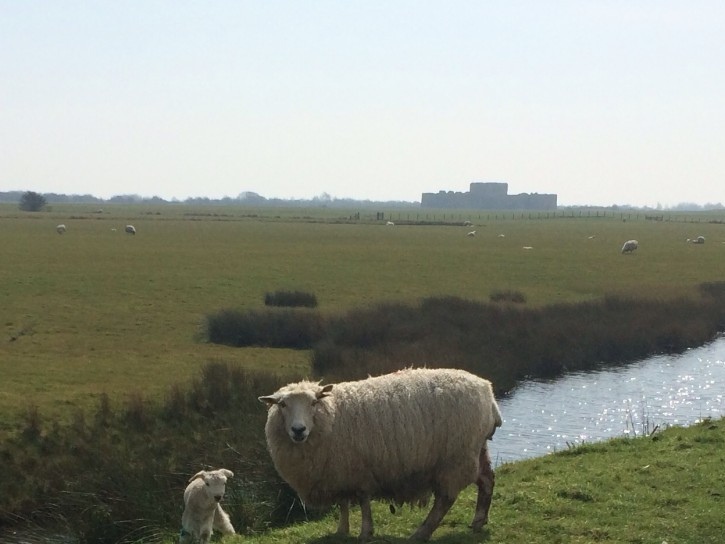A packed audience was treated to another stimulating evening at Rye Museum on Thursday, October 10, when one of its favourite speakers returned, this time to present a fast-paced, multi-layered and abundantly illustrated response to the question “What is Landscape?”.
It was indeed geographer Dr Geoffrey Mead, of the School of Global Studies, University of Sussex – who is also a Rye Museum Trustee, and listeners all went away with minds reeling with new information, insights – and appreciation of our local landscape heritage.
Certainly every listener will now realise the enormity of the question for there can be few words with as many definitions, meanings, interpretations and uses in so many different fields beyond the original Dutch landschap (referring to paintings of the countryside) and Dr Mead brought an abundance of them to life in his story and visuals.
Landscapes real and depicted in paintings, photos, maps, scientific reports, prose, poetry, even music, are today an intrinsic part of lessons in geology, geography, local history, agriculture, flora and fauna , types of buildings, types of human activity, town planning, and all forms of art and design.

And they can be used to praise the joys in nature and to raise awareness of blight. In particular we saw and heard about the many reasons natural landscapes change over time – as do the ways landscape is depicted. There are paintings depicting ‘nature’ devoid of humans – just landforms, weather, and light – and others use landscape as a background for portraits.
Perhaps ‘landscape’ makes you think of the vista from a National Trust property such as Stowe where the landscape was ‘designed’ for maximum appreciation from the great house and on a perambulation around the property a comment made in 1831 was : ‘Nature has done little or nothing; man a great deal, and time has improved his labours’.
As part of social and cultural history, ‘ landscapes’ often contrast ‘the old ways’ with the buildings and machines and workers of industry and others move on to urban settings. A painting of a Sussex field of hay with bales came with the fact there was a time when a day trip from the Sussex coast might require eight changes of horses, all needing hay. Then came the railways which did not require hay.. . . .
We were treated to examples of treatments of landscape in the works of John Constable and J W Turner and in the work of of the ‘quintessential Romantic poet’ John Clare, son of a farm labourer, who came to be known for his celebratory representations of the English countryside and his lamentation of its disruption. Also among the quotes we saw and heard was one from Edward Thomas, victim of the first world war, who blended the themes of war and the English countryside.

There were also examples of prose celebrations of landscape: Celia Fiennes who included Rye and Winchelsea (1697) on her Journeys through England on a SideSaddle, William Cobbett’s Rural Rides (1821); the prolific H J Massingham (1888-1952), advocate of ruralism and agriculture; P B Mais with his post-war clarion call to the war-and-deprivation-weary to rediscover the beauties of the English countryside All cited here because they are worth looking up.
Our Sussex area on the Channel coast has attracted particular attention. British painter, designer, book illustrator and wood engraver Eric Ravilious (1903-1942) is especially known for his water colours. He loved the Sussex Downs and tirelessly recorded the changing rural scene — everything from a chalk giant to cement works .
Half a century ago W G Hoskins’ book The Making of the English Landscape changed people’s views about landscape and history by creating awareness that they could find clues to history in what lay around the in gardens, fields, along the road and in cities: landscape as historical record, which must be studied multi-period. His book covered the whole of England from 500 AD to the 20th century. (It is now recognized one must start as far back as 5000 BC.)

More recently the multi-prizewinning Robert Macfarlane (1976-2019 ) explored the role of ‘landscape’ within topography, ecology, the environment and neglected classics,with his 2016 book “Landmarks” again exemplifying the interdisciplinary nature of ‘Landscape ‘ today.
The evening ended with a quick look at Leisure Landscapes from hunting on horseback to fields full of caravanners keen on country walks. And today they can consult their folded paperback maps as they go!
Image Credits: Anastasia Vengerova , Geoffrey Mead .



